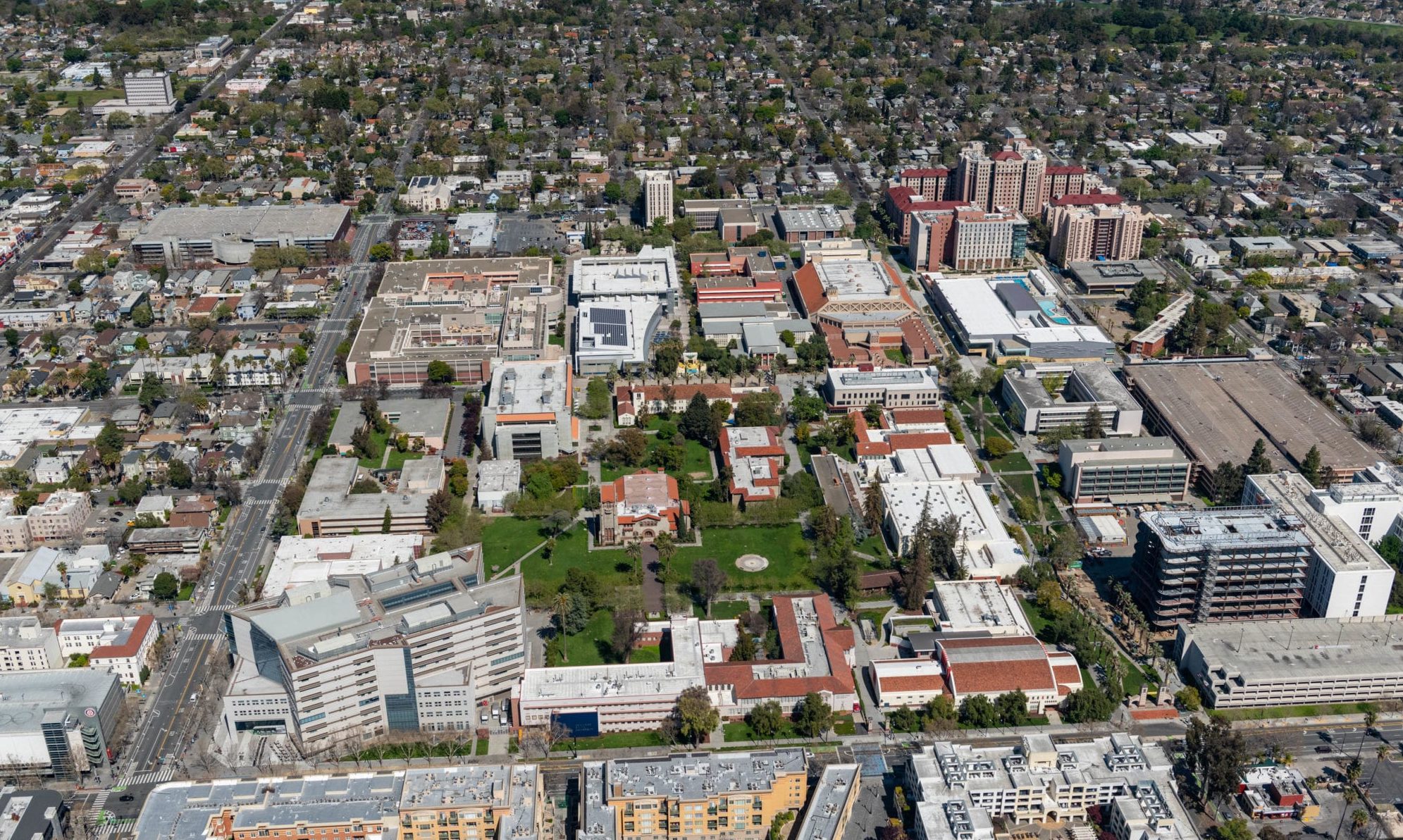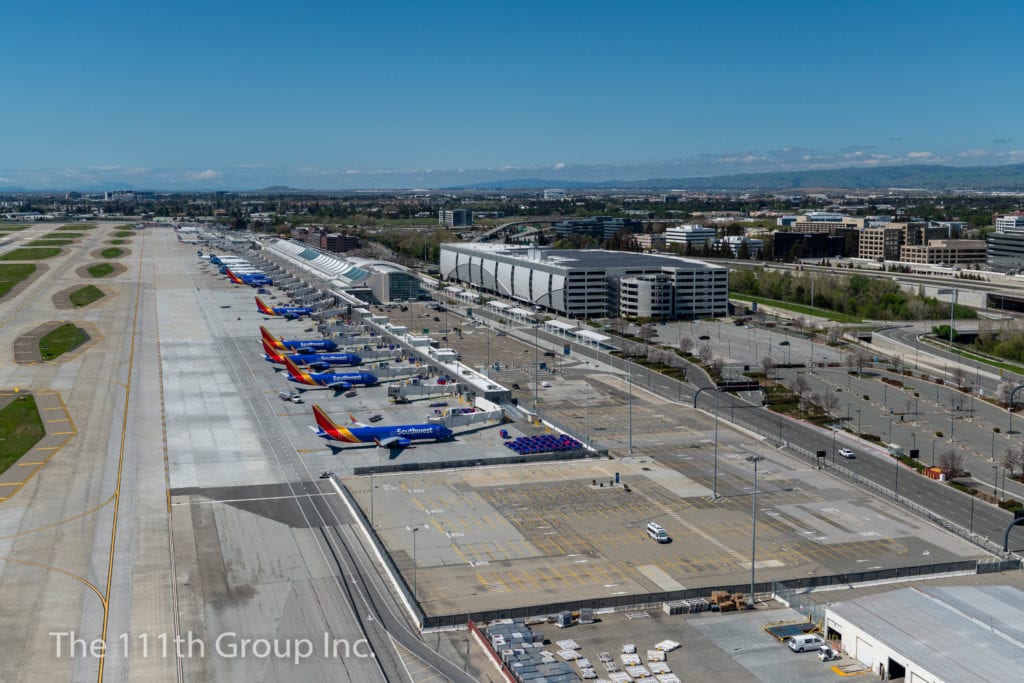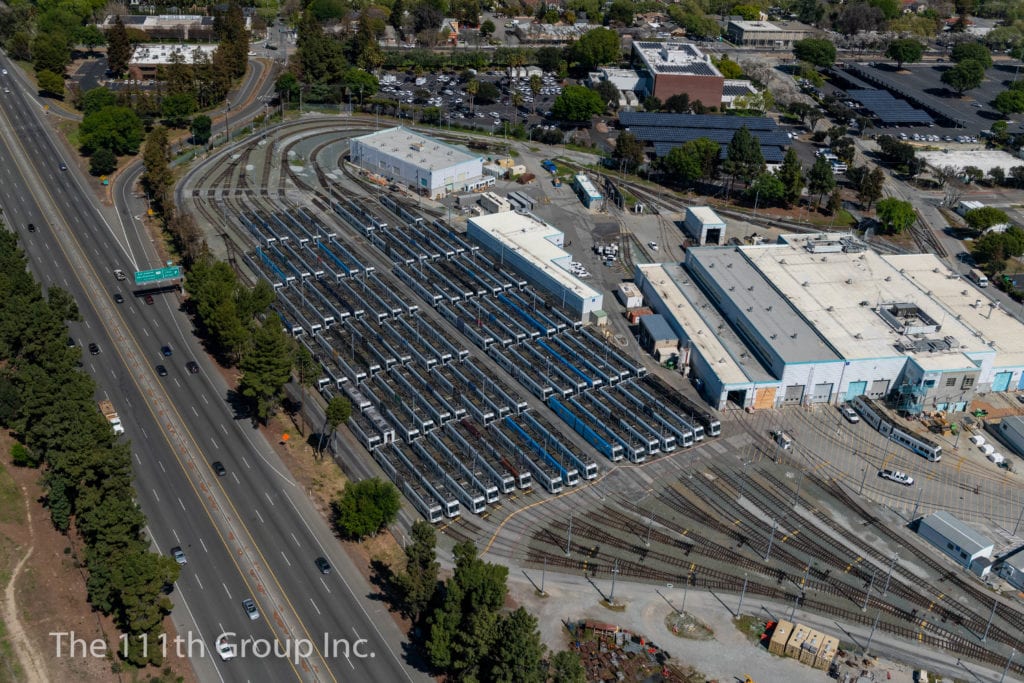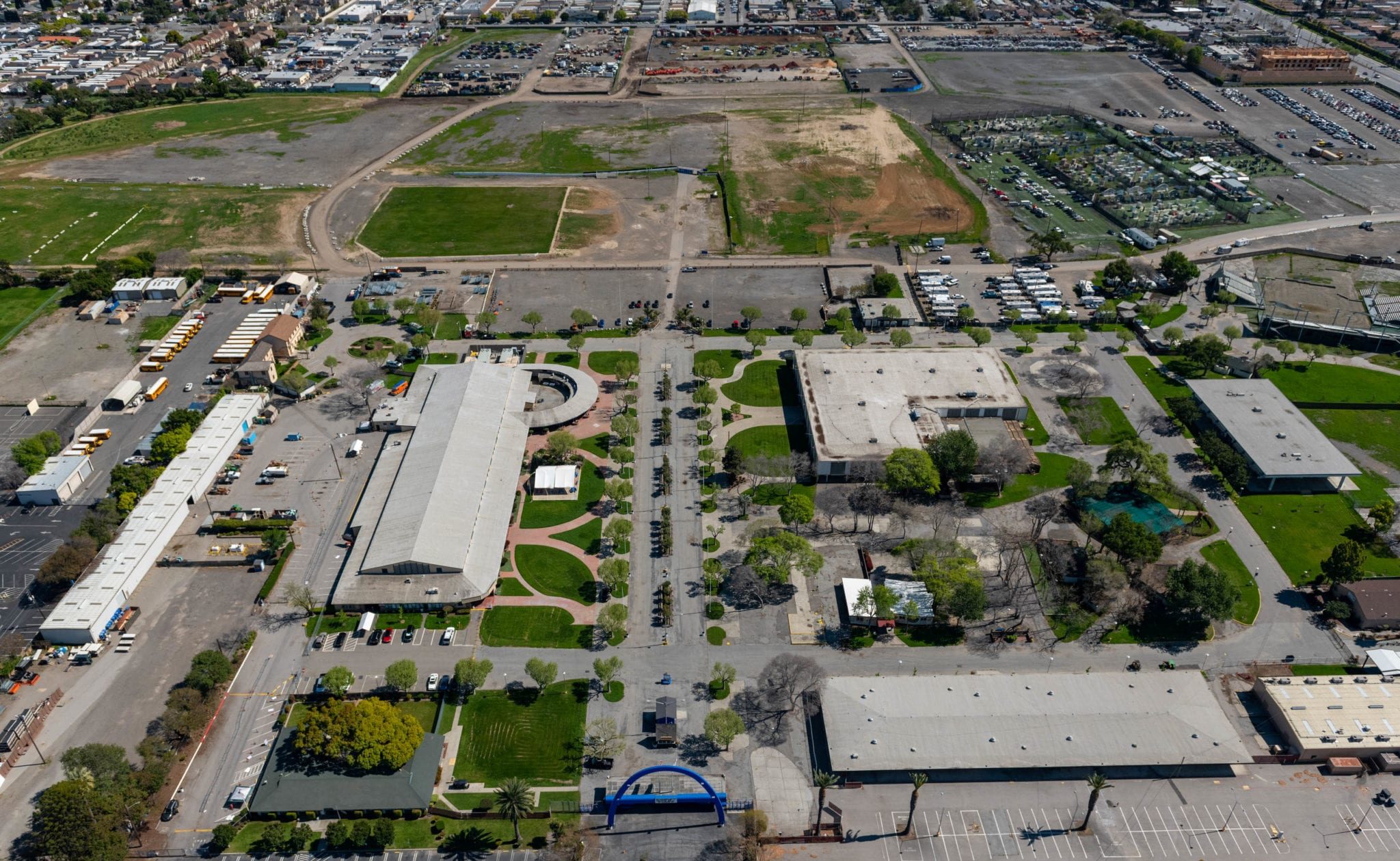Life in Silicon Valley has changed dramatically since March 17, when a regional shelter in place order took effect, relegating workers to the four walls of their homes and shuttering businesses not deemed essential.
County officials issued the order — and then extended and strengthened it Tuesday — to slow the spread of the contagious coronavirus, which causes a potentially deadly respiratory illness known as COVID-19. As of Thursday, 1,019 people had tested positive for the virus in Santa Clara County and another 36 and died.
As the virus spreads and residents prepare to stay inside as much as possible until at least May 3, the normally congested roads, packed parking lots and busy downtowns have been left almost barren compared to only a few weeks ago.
San Martin-based The 111th Group, which does aerial photography, flew around San Jose — the Bay Area’s largest city — Tuesday to capture the view from above. Take a look below at scenes from San Jose State University, the county fairgrounds, the Mineta San Jose International Airport, Eastridge Shopping Center and more.


As the days get longer and warmer, Coyote Creek Golf Course in San Jose sits empty on March 31. The date marks exactly two weeks after Santa Clara County health officials announced a regional shelter in place order that shut down all nonessential businesses.


San Jose State sat empty and quiet around midday on March 31, when students would normally be swarming the campus for classes, if not for the novel coronavirus outbreak. Now colleges are working to continue the school year via remote and online classes. So far, one student and one employee have tested positive for the virus, university officials said this month.
San Jose State University President Mary Papazian announced on March 18 the university’s Spring graduation commencement would be postponed. It was scheduled for May 20 through May 22.
“Unfortunately, we do not have clarity on how this health crisis will unfold, so we ask for your patience while we make arrangements to celebrate each of our graduates,” Papazian said in a letter to students. “Please, continue to take care of yourselves and those close to you as we all work to stay safe and healthy while finishing the semester.”


Only essential employees who can’t physically do their jobs from home are showing up to work across the region, leaving the roads and parking lots that are normally filled to the brim mostly deserted, even in downtown San Jose. Most construction projects have also halted on the many office and residential projects underway in the city’s central business district.


Parking at the Mineta San Jose International Airport is easier to come by, though only “essential” travel is allowed as officials attempt to contain the coronavirus. The airports’ Economy Lot 1 is closed and travelers can pay $18 a day to park in Lot 2.
As of March 23, five TSA agents and an airport employee had tested positive for the virus.


The San Jose airport, though still open, has scaled down some of its operations, including food and retail, and ramped up its cleaning and training. To find the latest on flight schedules, airport officials advise contacting airlines directly.


VTA’s light rail trains sit parked at the agency’s San Jose operations facility. All light rail trains have been replaced by bus routes, running on reduced schedules after VTA officials announced that two employees had tested positive for COVID-19.
One is an office worker and the second a light rail operator trainee.
Light rail ridership for VTA has declined by 82% since Santa Clara County’s shelter in place order. The agency decided earlier this month to go fare-free on its buses and trains to help minimize contact between passengers and drivers.


School buses that would normally be shuttling students around Santa Clara County sit parked at Story Rd. and Remillard Court in San Jose. Classrooms across the Bay Area have been closed since mid-March and parents grappling with distance learning and homeschooling found out Wednesday that Santa Clara County school districts wouldn’t reopen this school year.
The 260,000 students who attend 31 districts in the county will instead finish the school year at home learning online. Local, state and federal officials have banded together to offer meals to students and families across the region who normally depend on school lunches. Tech titan Google has agreed to donate 100,000 WiFi and broadband connections as well as 4,000 Chromebooks to help bridge the digital divide, particularly in rural areas.


State officials announced this month they’d purchased more than 1,300 trailers from FEMA to provide shelter for homeless people who need a place to protect themselves as the contagious respiratory illness spreads across the state. These trailers sat in the Happy Hollow Park and Zoo parking lot on March 31.


The events that normally happen at the Santa Clara County fairgrounds have been canceled. Instead, 15 trailers will be set up on the 150-acre site to house between 60 and 80 people who would otherwise sleep on the streets. The trailers are part of an effort to give homeless residents more protection from the virus.


The parking lots around Eastridge Shopping Center sat empty on March 31. Only retailers that provide essential supplies, like groceries, prepared meals and medicine are allowed to remain open. Businesses that are allowed to stay open are under strict rules around how many people can be inside at one time.
Follow along with San José Spotlight’s real-time coronavirus coverage on our LIVE BLOG here.
Contact Janice Bitters at [email protected] or follow @JaniceBitters on Twitter.



Leave a Reply
You must be logged in to post a comment.